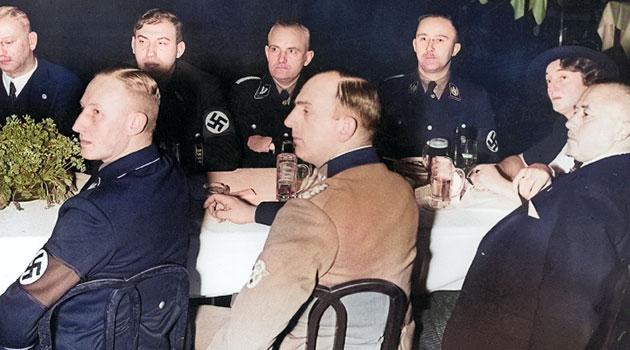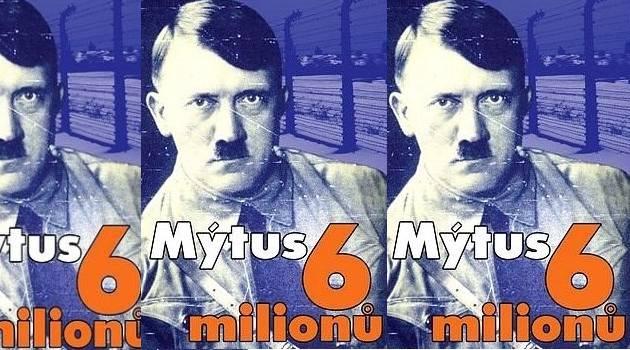It took the Nazis 90 minutes to approve the "Final Solution", but after the war almost none could remember the Wannsee Conference

It took high-ranking Nazis just an hour and a half to definitively pass judgment on Europe’s Jews – millions of them. The meeting at Berlin’s Wannsee Villa 80 years ago on 20 January 1942 was not the very first decision to annihilate the Jews, because the Holocaust had been underway since the Nazi German invasion of the USSR on 22 June 1941, but it did serve to coordinate the different offices involved.
“The displacement of the Jews to the East… represents the start of the Final Solution to the Jewish question,” SS officer Adolf Eichmann wrote in January 1942 to the Gestapo service. The conference at Wannsee was, according to historians, a war crime, an administrative act of mass murder such as history had never known before: The Nazis and their henchmen murdered at least six million Jewish people during the genocide in less than four years (from the summer of 1941 until the close of the European war in May 1945), approximately two-thirds of Europe’s Jews.
They toasted the agreement with cognac, then claimed to recall nothing after the war
The conference in the ostentatious villa on the shore of Lake Wannsee, built in 1914, was called a “secret Reich matter”. It was attended by 15 high-ranking leaders of the SS, state bureaucrats, and party functionaries at the invitation of the head of the main security office (the RSHA), Reinhard Heydrich, who had been entrusted with “solving the Jewish question”.
Two-thirds of those attending were university graduates and many held the title Doctor of Laws. They toasted their agreement to annihilate all Jewish people with cognac.
After the war, those who had attended the conference first denied having been there, then pretended to recall nothing about it. The exception was Eichmann, who said the following about the meeting when he was tried in Jerusalem in 1961: “The entire affair lasted less than an hour and a half.”
“The orderlies kept refilling the cognac and eventually everybody was speaking at the same time,” Eichmann described the gathering. However, he also claimed ignorance and to have initiated nothing: “I got my orders from my superior.”
“I spent most of the time in the corner of the room sharpening pencils,” he alleged. The Protocol of the Wannsee meeting had been discovered by subordinates to the US prosecutor in March 1947 in a file at the Foreign Ministry while attempting to find background materials for the upcoming trials of the Nazi war criminals.
The bureaucrats found copy no. 16 – the only one preserved of what had originally been 30 copies. British historian Mark Roseman, in his introduction to The Villa, The Lake, The Meeting: Wannsee and the Final Solution (2002, Czech translation released in 2003) wrote the following: “No bleaker description of this regime, characterized by systematic killings, exists.”
“To this day, the Wannsee Protocol remains the clearest, most programmatic statement of how the Nazis carried out the genocide,” Roseman states. In the beginning, it seemed the document that had been found captured the exact moment when the Nazis decided to annihilate the Jews.
However, historians soon realized that the Protocol was not what it seemed. Above all, Adolf Hitler had not attended the conference, and those who were there were not in positions of the kind that would have enabled them to decide about the genocide.
The time at which the meeting was held was also surprising. It was known that the mass murder of Jews in the Soviet Union had begun six months earlier, and it was also known that Jews had been murdered with gas since the beginning of December 1941 in Chełmno, occupied Poland, and that the Belzec extermination camp was already being built.
When was the definitive decision about the Holocaust made?
Historians have yet to agree on when the definitive decision about the Holocaust was made. According to British historian Ian Kershaw, it is possible that it was made in September 1941, when Hitler took the decision to deport Austrian and Czech Jews to the East.
German historian Christian Gerlach believes Hitler made the decision at a meeting of the heads of the NSDAP (the Nazi party) on 12 December 1941. Originally the Wansee Conference was called a “meeting of state secretaries” and was meant to be held on 29 November 1941.
The date was then moved to 9 December, but the Japanese attack on Pearl Harbor caused another schedule change. When it was finally held, the meeting had no firm agenda and Heydrich lectured during it for most of the time.
At the Wansee Conference, the Nazis decided to deport elderly Jews in particular from other countries in Europe to Theresienstadt (Terezín). “For the Final Solution to the Jewish question in Europe about 11 million Jews are under consideration,” the Protocol concludes.
In the official record, Eichmann used ambiguous terms and euphemisms to officially document what those who attended had said. According to German historian Götz Aly, this choice of linguistic means was not meant to serve the purposes of secrecy, but rather “to function as a moderately-dosed antiseptic to facilitate the administration of mass murder.”
The euphemistic “Final Solution” and its plan of technical work
In his publication ‘Final Solution’: Nazi Population Policy and the Murder of the European Jews, Aly notes that “the actual aim and success of the [Wannsee] conference was to aid the ‘Final Solution’ with being included into the common bureaucratic and political structures of the German state and appropriately organized in terms of technicalities and work. This method made it possible for each individual to cast aside personal responsibility while becoming a somewhat active yet essentially passive accomplice of the Government.”
“Nobody wanted anything more from them,” Aly writes. “In Germany, no more than that was necessary.”
Roseman, for his part, has written the following about the Wannsee Protocol: “On the one hand, the killing is being spoken of quite cautiously, and the euphemism of the ‘evacuation to the East’ is used, while on the other hand there are sentences about destroying Jewish workforces that are so open, and the consequences of which are so clear, that euphemisms become useless as a coverup.” After the war, some attendees of the Wannsee Conference (those not already dead, like Heydrich or Roland Freisler) were convicted, given mild punishments, and soon pardoned.
Eichmann was the only attendee to be executed after his trial in Jerusalem at the close of May 1962. The last living person to have attended the Wannsee Conference died in January 1987, former SS officer Gerhard Klopfer, who worked as an attorney again after the war and whose obituary described him as having died “after living a full life for the good of all who were within his influence”.
Since 1992, the Wannsee Villa is a memorial to the 1942 conference. A new permanent exhibition about the Wannsee Conference opened there in January 2020.
